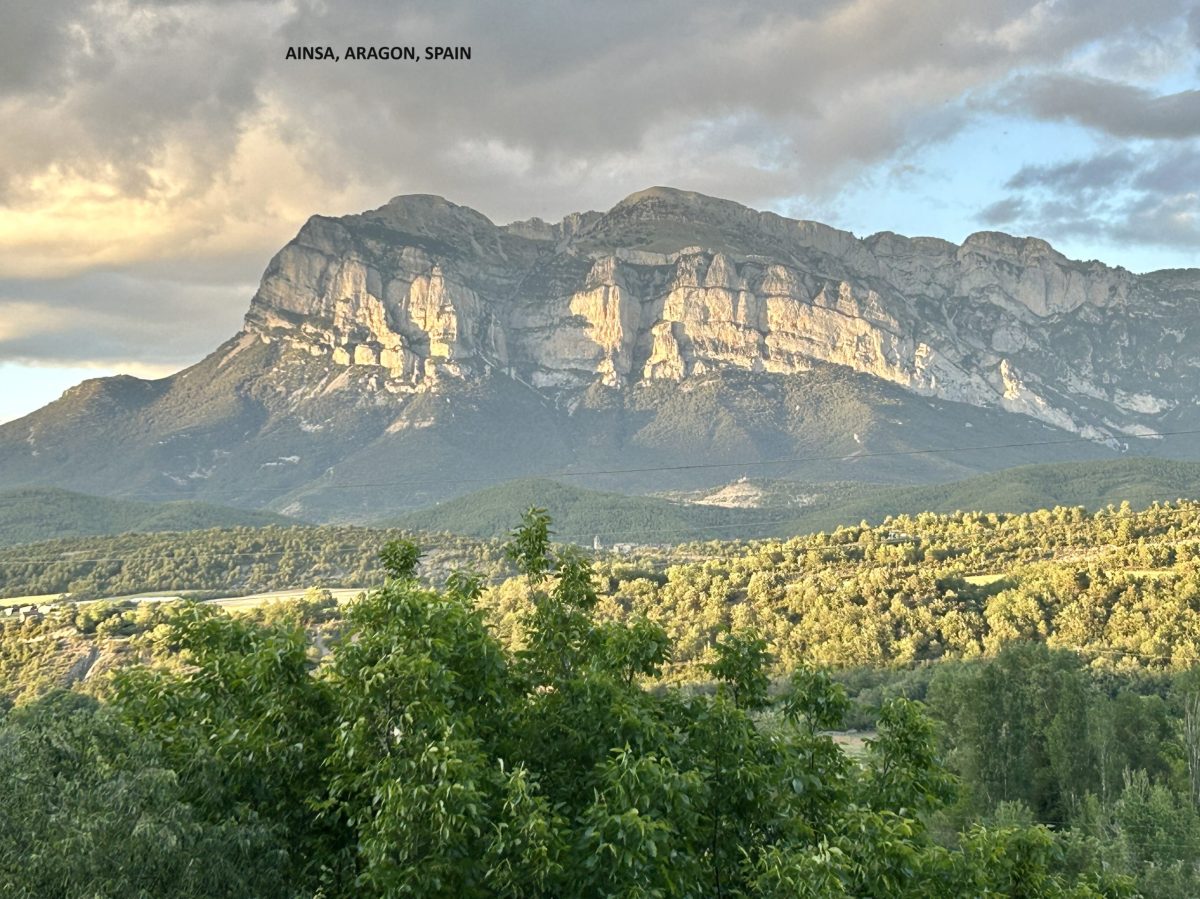Loches is one of the more picturesque towns in what was once the province of Touraine. You’ll still hear mention of Touraine but the province (along with all the other 33 provinces) was abolished during the French Revolution and incorporated into a series of ‘departments’. Loches is now one of the more picturesque towns in the Indre et Loire Department of the Centre-Val de Loire Region. Doesn’t have quite the same ring, does it?
It is a small town of some 7,000 people on the banks of the River Indre just 25 miles south east of Tours and, in addition to being wholly captivating, it is steeped in history. We decided to stay in the town for two days to properly explore the place and to watch England’s last group stage game of the football (European Championships) against Slovenia. It proved to be one of the more enjoyable stopovers of this tour (but not because of the football although England did make it through to the next round and will play Slovakia next).
Loches is split into two parts; the old medieval town which sits at the top of a natural rocky spur and is full of sloping cobbled streets and imposing buildings and monuments and the modern more fashionable and dynamic lower part of the town with it’s wide open spaces.
I chose to visit the upper town first and made my way from our campsite (La Citadelle) across the Indre and up into the old town via the aptly named Rue Chateau (given that there’s a castle at the top). On the way I paused at the 16th century Maison du Centaure. This Renaissance style building was originally a private residence (named after a relief on it’s facade of Hercules killing the centaur Nesses) but it is now used to house public exhibitions. There’s a permanent exhibition recounting the story of Loches and, while I was visiting, a temporary exhibition (Loches en 1944) to mark the 80th anniversary of France’s liberation during WWII. I wasn’t very impressed with the latter production which, unless I missed something, failed to make any mention of a shocking event concerning George Dubosq who headed the French Resistance in this area at the time. I’ll not go into detail here but, he was a very unsavoury character who was eventually executed by the French government on 14 May 1946. Bit of an oversight not to mention him, don’t you think?

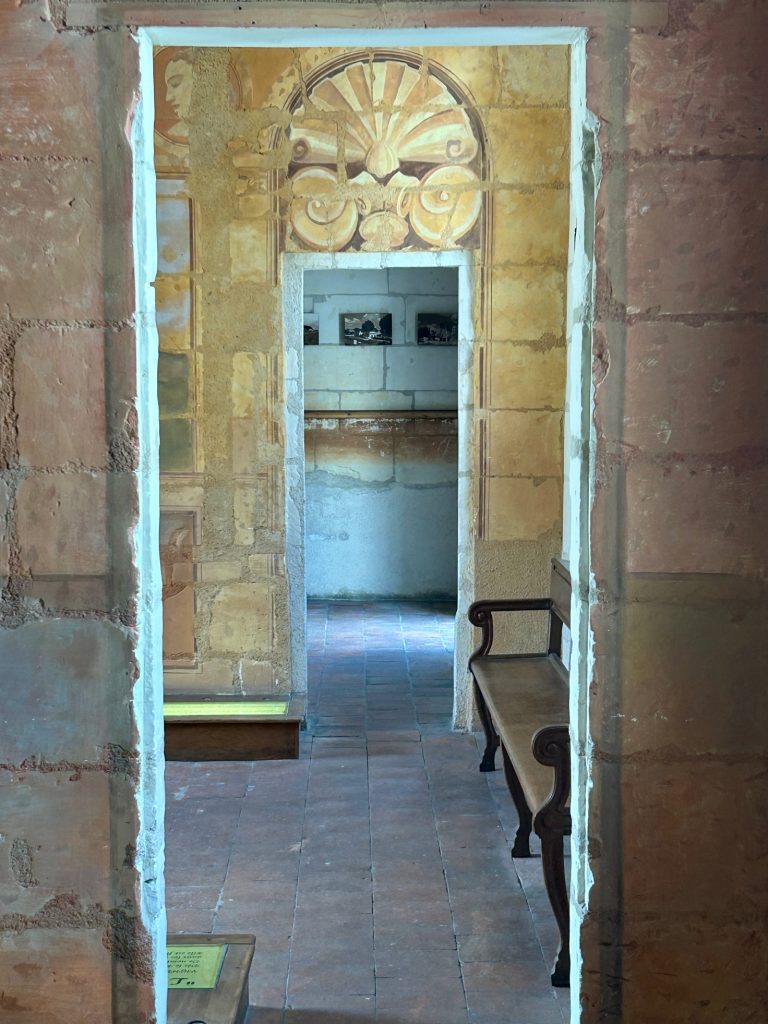

Reproduced below is a photo of the relief after which the Maison du Centaur is named. Nesses had been caught trying to abduct Hercules’ wife, Deianira, and Hercules had hit him with a poisoned arrow. In case you have forgotten your Greek mythology, the centaur died fom the poison but before expiring he convinced Deianira that his blood had magical properties and would serve as a potion to ensure her husband’s future fidelity. In fact, the blood was poisoned by the very venom which Hercules had tipped his arrow with. Later, when Deianira began to have doubts about her husband’s faithfulness and sought to win him back, she bought him a magnificent shirt which she sprinkled with the potion. Hercules gratefully donned the shirt… and the poison took effect. It began to boil him alive. Hercules could not endure the pain and killed himself. A distraught Deianira subsequently hung herself. Greek tragedies, eh?
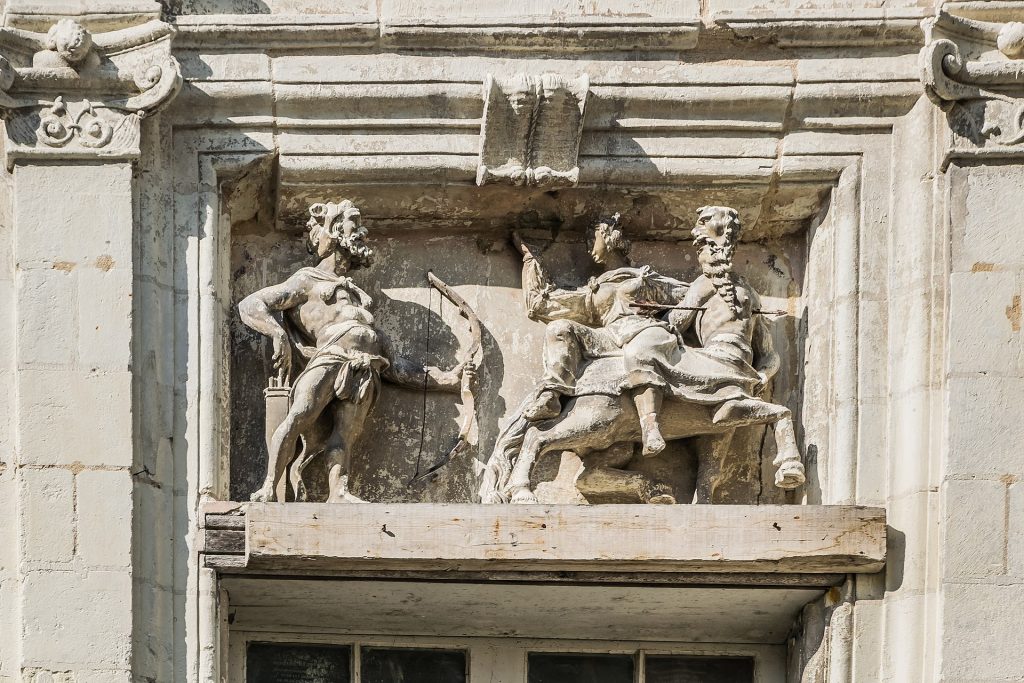
It took no time to walk from the Maison du Centaure up into the old town and my first port of call, the Collegiate Church of Saint Ursus (Saint Ours in French). This 12th century church dominates the town. All the principal buildings across Loches’ old town are built of the beautiful tufa/tuffeau rock I described in my earlier post on Turquant (Tour 9) and this white rock especially when topped with grey tiles is simply stunning. Equally striking, inside Saint Ursus, is the intricately carved alabaster and marble tomb of Agnes Sorel, a young lady who was a mistress to the French King Charles VII and who, during her all too brief lifetime (she died at just 28 years of age), used her position with such great effect to shape the political and social landscape of France.
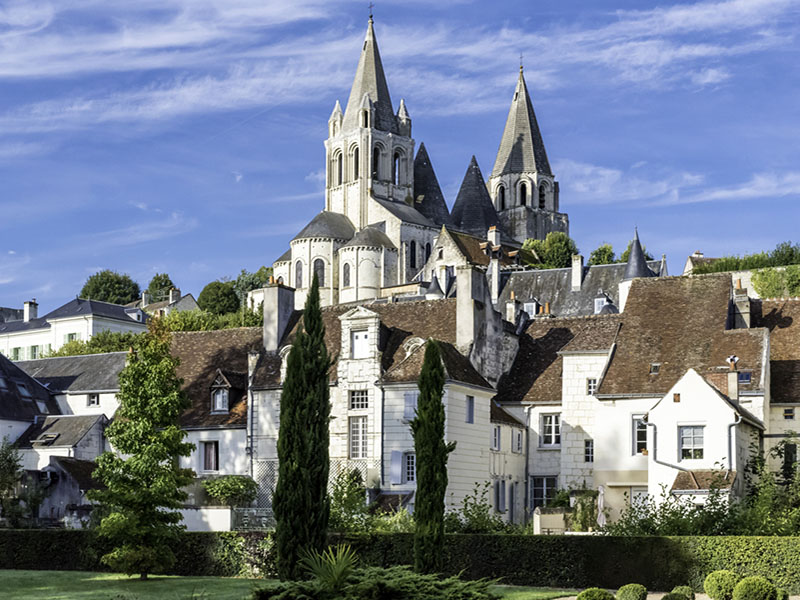
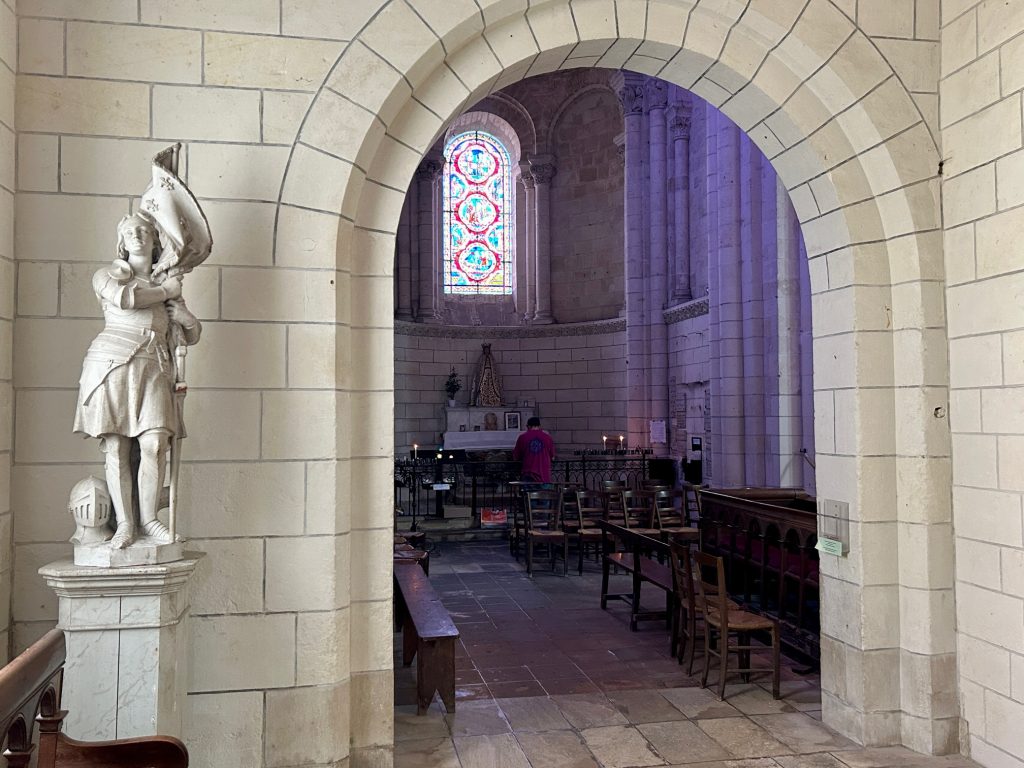

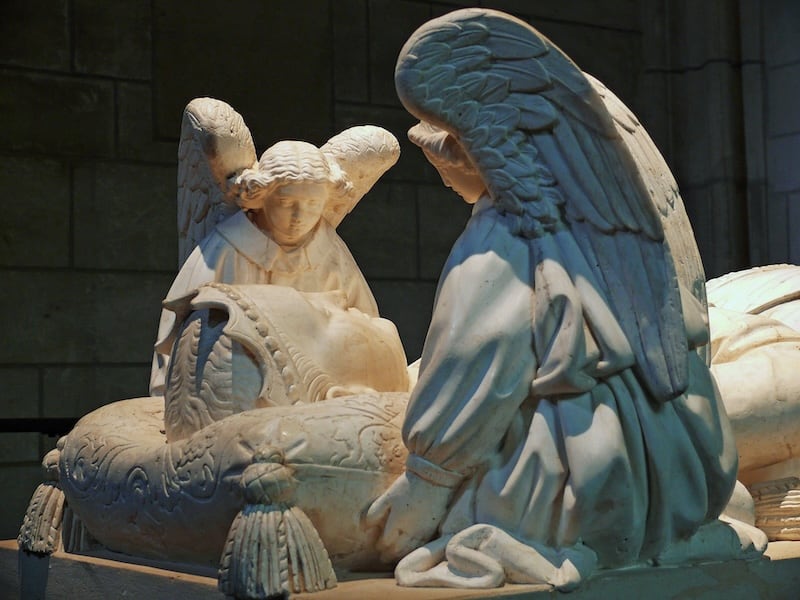
Agnes Sorel joined the Court at just 20 years of age and her outstanding beauty immediately caught the eye of Charles VII. He was captivated by her ; so much so that at age 22 she was declared ‘maitresse en titre’ (the First of the King’s Mistresses). Charles was besotted with her, even going so far as to declare that he would leave his pregnant wife for this new mistress. He showered her with gifts (including the Chateau and Royal Residence at Loches) and; he was all too easily influenced by her, which aggravated many in the court (particularly the Dauphin, Charles’ son, who would became King Louis XI).
Agnes Sorel further provoked the court by introducing fashion trends which, for the time, were quite outrageous. Starting with low necklines and transparent fabrics, she graduated to going bare breasted (a style which others in the court were encouraged to follow). Worse still she wore diamonds in public which was a privilege afforded only to the king in those days.
There are various views as to how Agnes Sorel came to die at such a young age. Initially it was thought she died in childbirth but with increasing frequency it is being suggested she died from poisoning by the Dauphin who had grown to despise her.
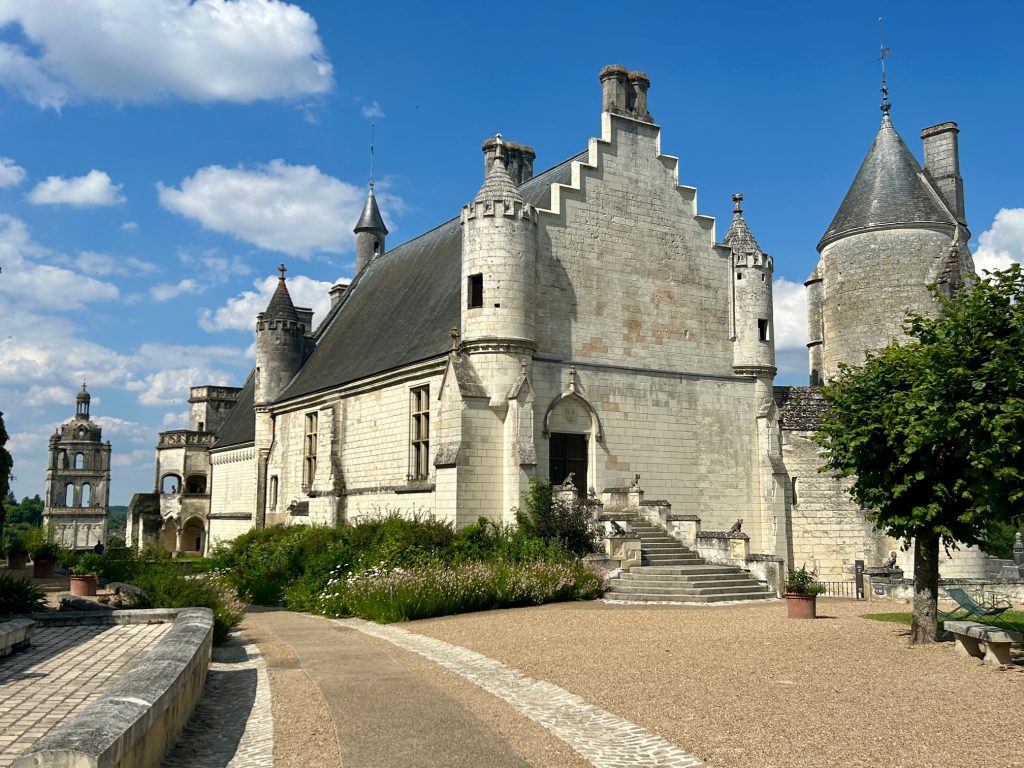
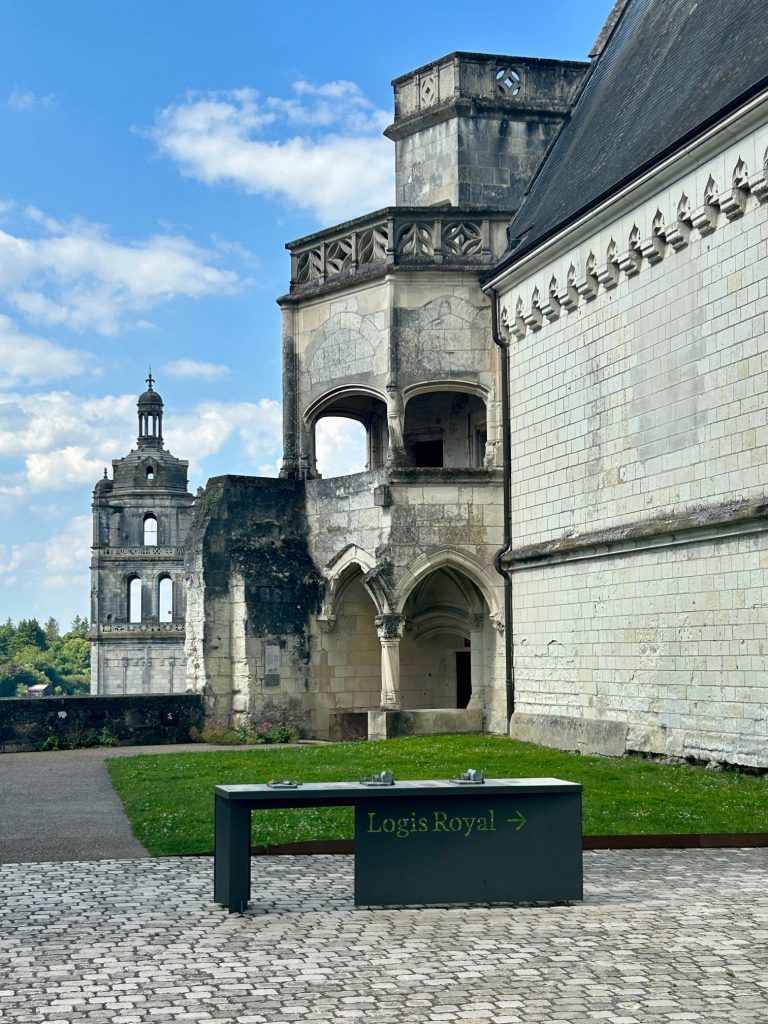


For all it’s size and grandeur (it has been described as an architectural jewel), the Royal Residence in the Chateau complex at Loches has very few rooms but, it has a high place in the history of France. It was the preferred residence of Charles Valois even before he was crowned Charles VII of France and it was in the Great Hall in the Royal Residence of Chateau Loches that Joan of Arc, after raising the siege of Orleans, urged the then Dauphin Charles to enter Reims to be crowned King Charles VII. It would be a long time after this before the 100 Years War was concluded but for many this was the beginning of the end of England’s rule in what is now France. For my part, it felt special (extraordinary even) standing in the Great Hall where Joan of Arc once stood and caused such a celebrated event.
From the Royal Logis I made my way to the most imposing of the buildings in the complex, the 11th century castle keep or donjon, which during the 12th century was occupied and strengthened by Henry II and and his son Richard I (the Lionheart). Later, during the 100 Years War, the donjon and a ‘New Tower’, were converted into a state prison. Indeed, this prison held nobles and senior members of the clergy from late in the 15th century until the 18th century when it was ransacked and partially destroyed during the French Revolution.
I spent hours wandering this part of the castle complex. A touchscreen histopad was provided with the entrance ticket and with the histopad I could visualise each room, cell, underground passage and dungeon as it may have looked when being used as a prison. This was brilliant because it proved as close an experience of being immersed in history as you can get.
It is a lengthy list of nobles who were held in the prison with, perhaps, the most famous being Ludovico Sforza Duke of Milan who died in Loches in 1508. How he died and where he is buried remains unclear but it is thought he was allowed to starve once his usefulness had lapsed and the search for his body in the castle grounds continues to this day.

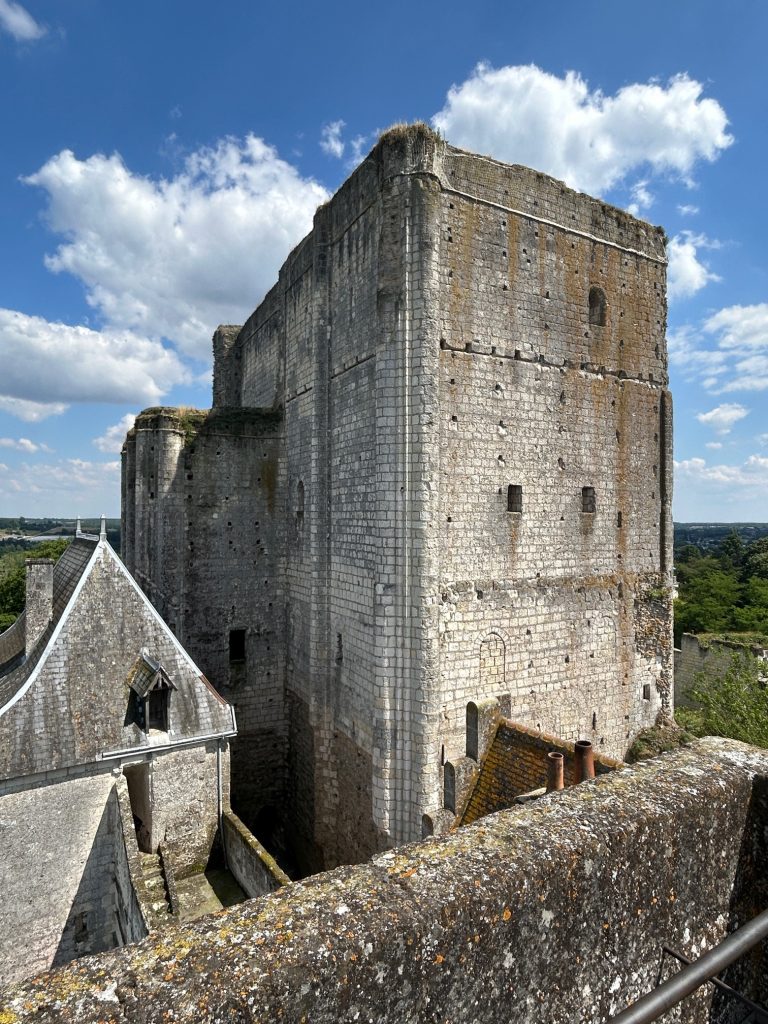

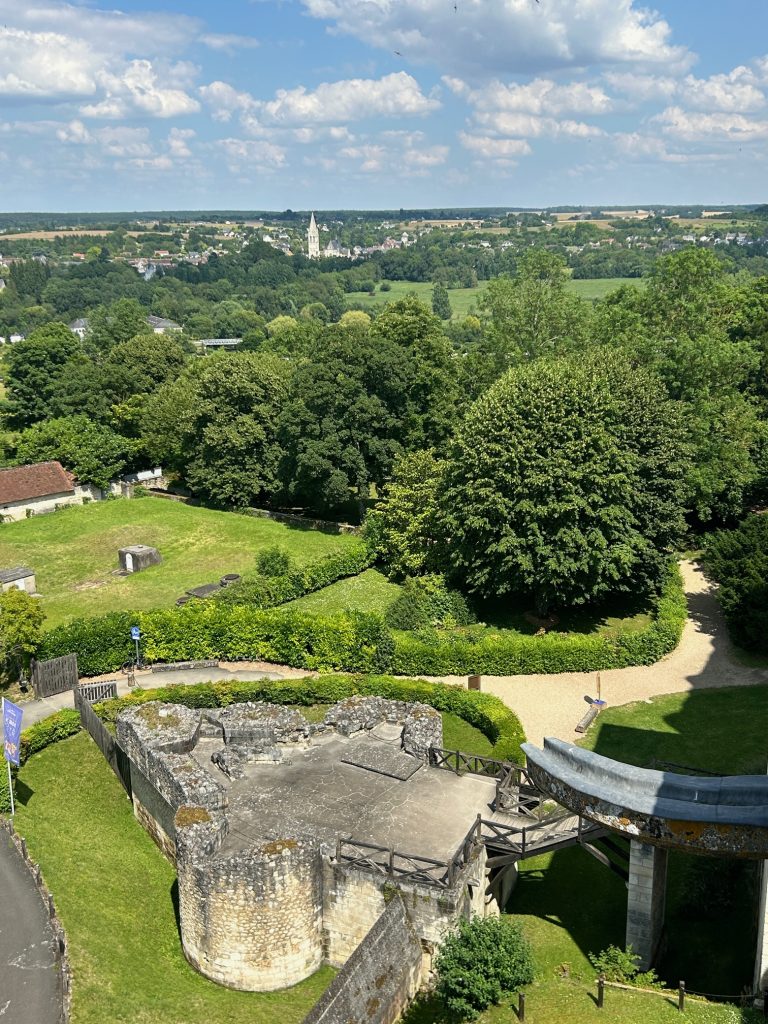
From the Castle Keep I made my way back through the beautiful cobbled streets of the Medieval quarter to the new part of the town, passing the Lansyer Museum on the way. I didn’t have time to visit the museum which was once home to the 19th century landscape artist Emmanuel Lansyer but, upon his death in 1893, he bequethed the family home, his art collection and thousands of personal objects to the city of Loches and the home itself was later turned into a museum.
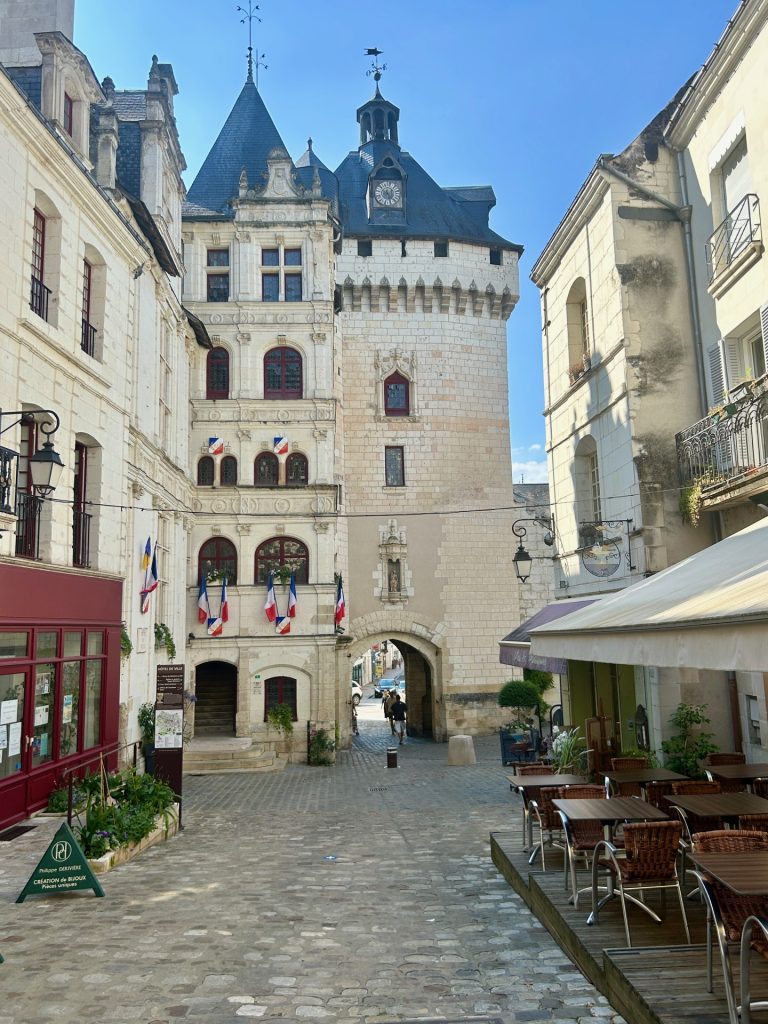
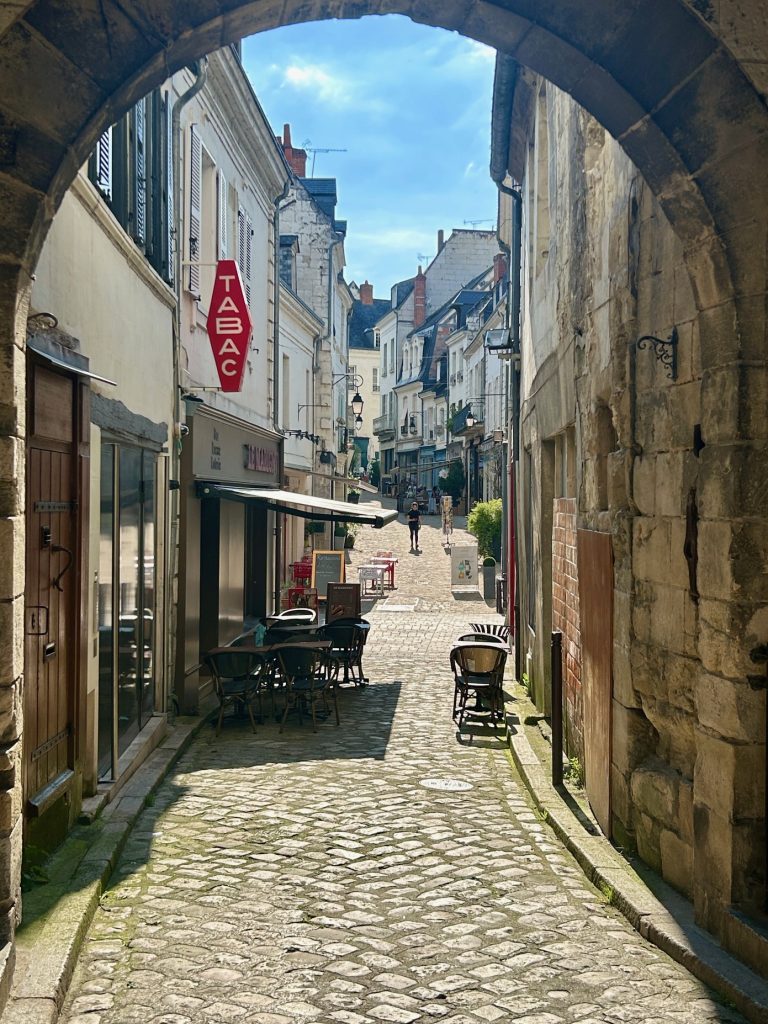
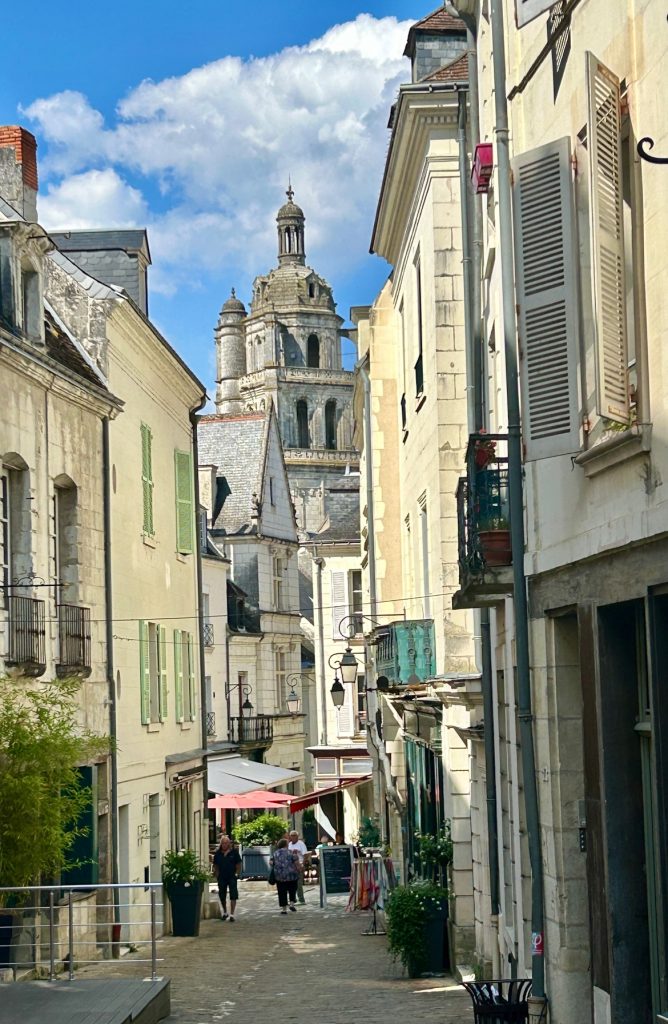
In the new part of the town where I hoped to find a restaurant-bar which would be showing the England v Slovenia football match that evening, I passed the Tour Saint Antoine and the Saint Antoine Church. Neither were open to visitors but that allowed me time for a beer or two and, on the corner of Mazerolles Square, I found the perfect place to both enjoy a beer and watch the football later in the day. Bless her, the proprietor agreed to reserve a table for me in front of the widescreen television.

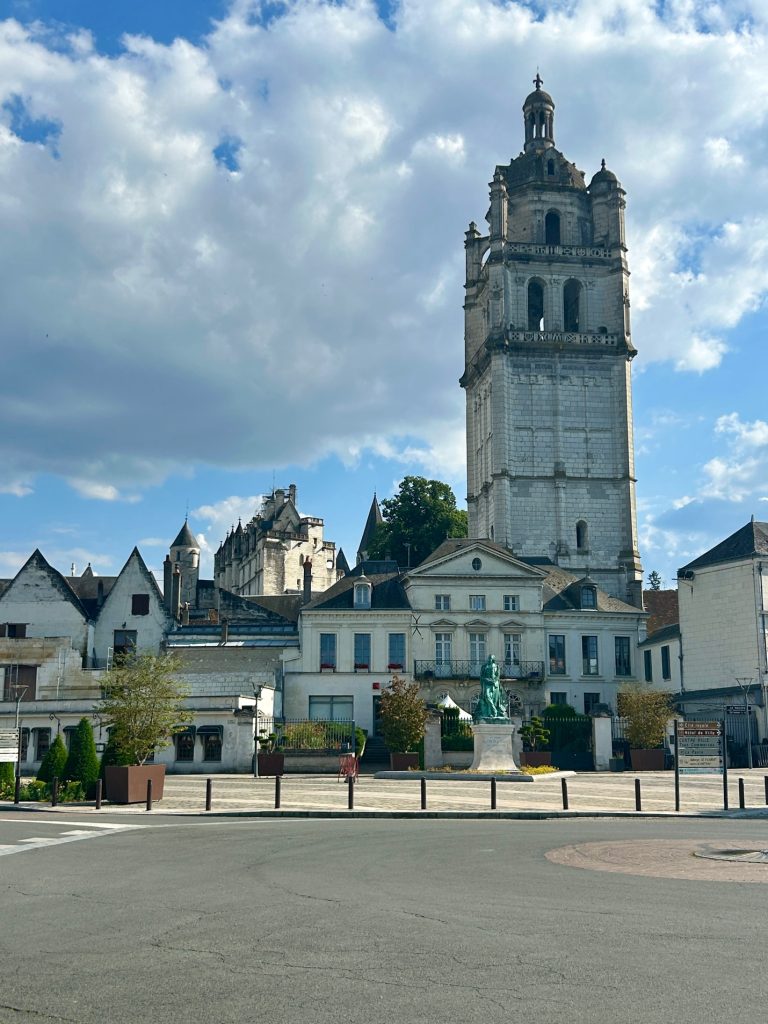
The football match was a disaster. Slovenia are currently ranked 57th best team in the world by FIFA but once again, England failed to deliver with the match ending in a 0-0 draw. Although England have made it through to the first play-off round (the Round of 16) and will meet Slovakia next, they continue to play very poorly.
Notwithstanding the above, we had a pleasant evening in the bar where I had reserved a table. The food (a shared platter) was good and the wine (a bottle of Cremant de Loire for Vanya and a bottle of Chinon Red for me) was excellent and everything was very reasonably priced. Oh, and we got to see Loches at night – and very pretty it is too.

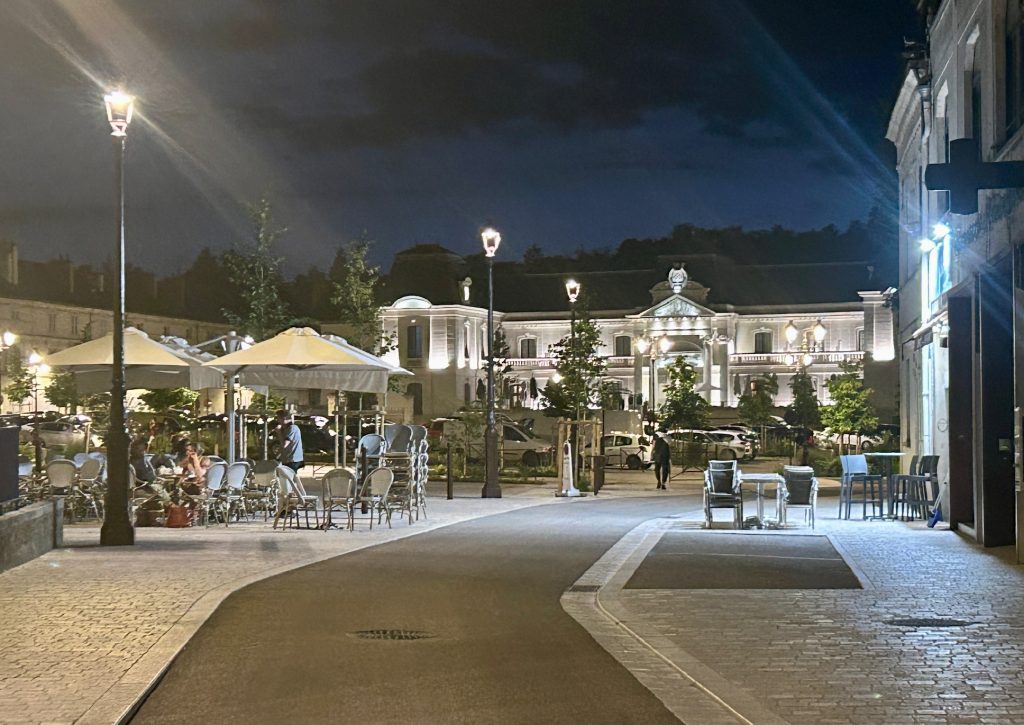
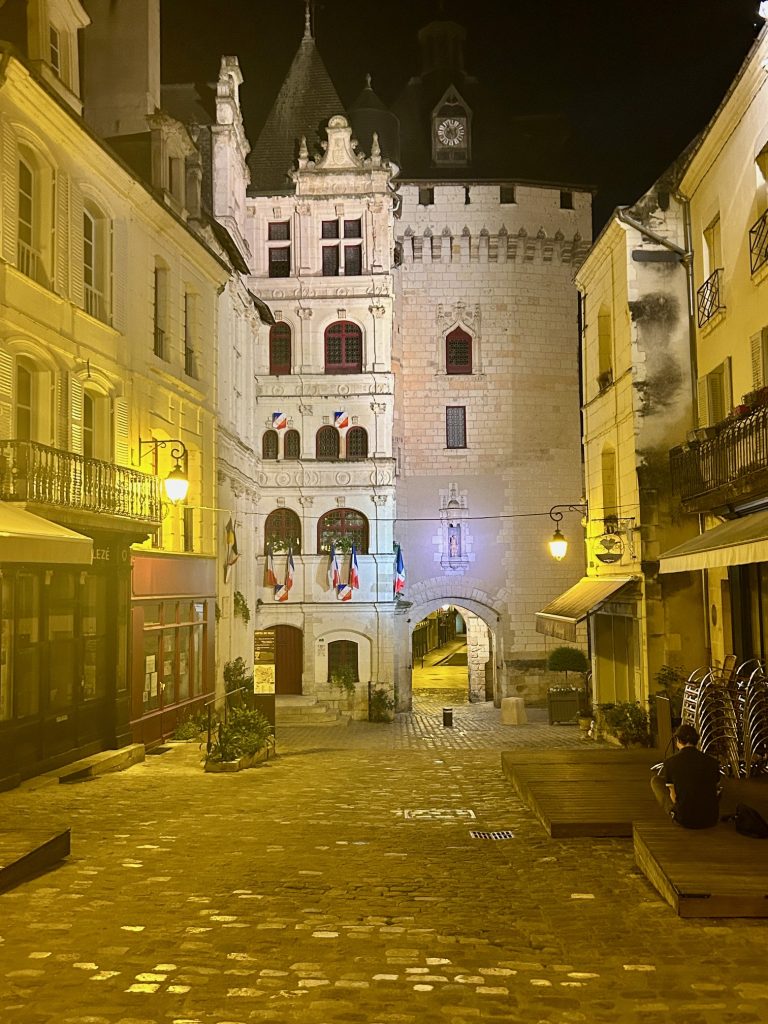
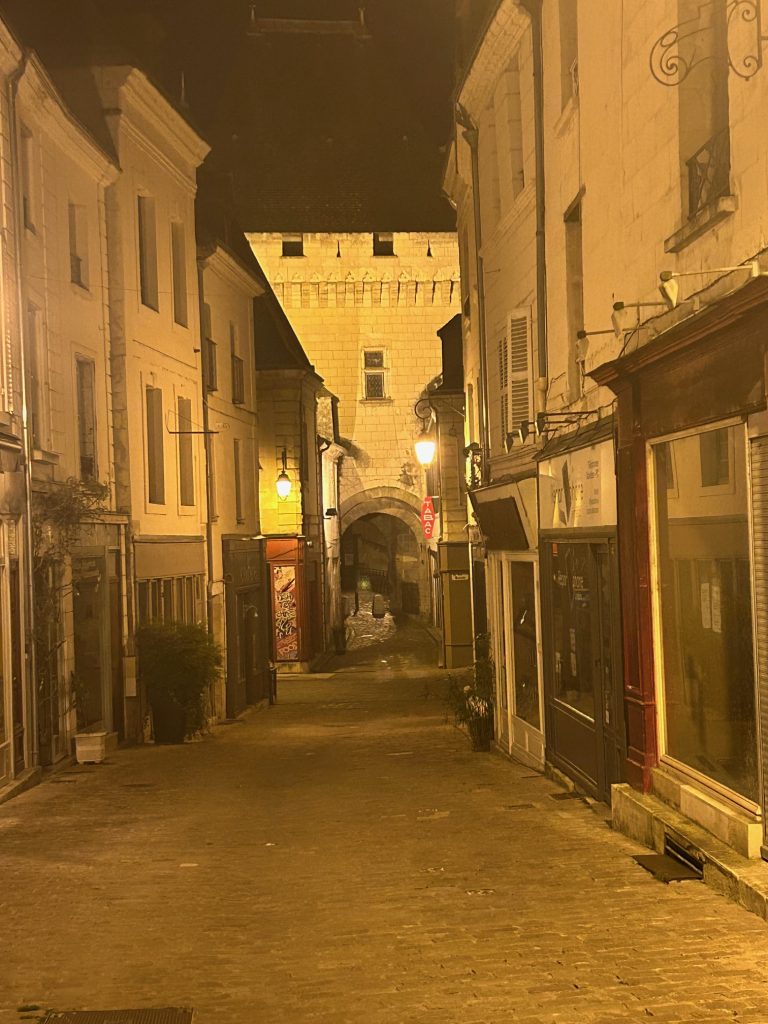
Of course, it didn’t end there. Yours truly left his hat at the restaurant and had to return the next day to retrieve it. It worked out very well because the farmer’s market was in full swing as I arrived back in town and the Loches market is considered one of the best in the area with it’s focus being towards a wide range of farm products from all across the old province of Touraine. The produce of bakers, butchers, cheesemakers, fishmongers, florists, market gardeners and, naturally, wine producers were all in evidence. The real discovery for me during this tour however, has been the Chinon red wines and the market provided yet another opportunity to acquire a couple more bottles.
There’s no doubt we’ll be back to this area and not just for the wine. During this visit we didn’t get to see the nearby town of Beaulieu les Loches (with it’s abbey ruins and church of Saint Laurent) nor the famous flower village of Chedigny (with it’s Michelin Guide restaurant of Clos aux Roses). Next time.

